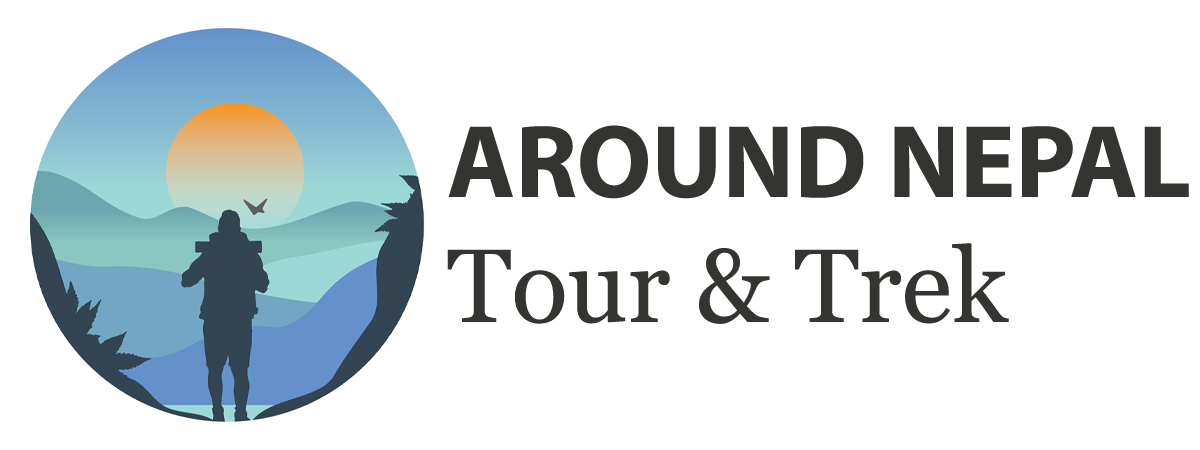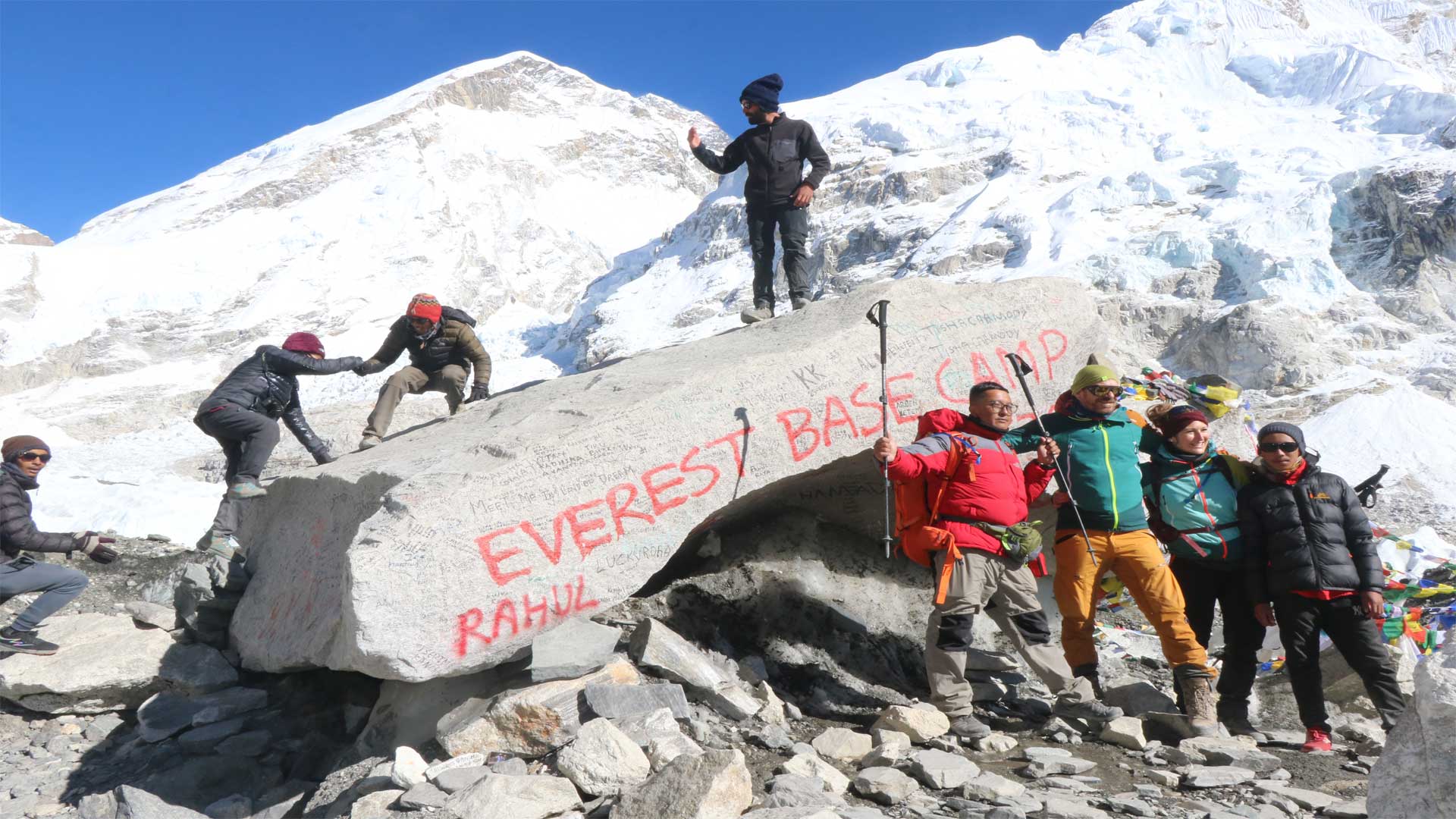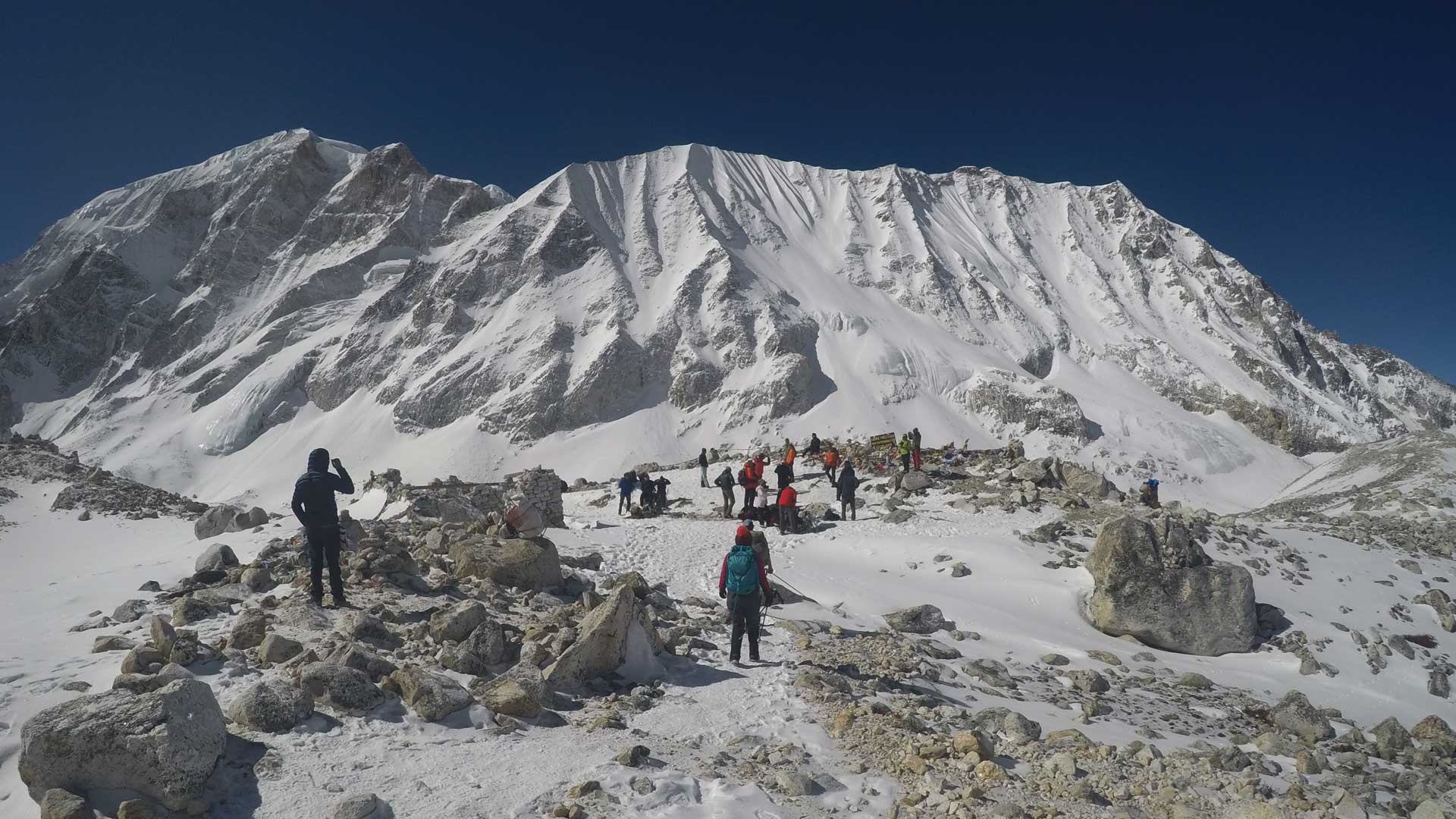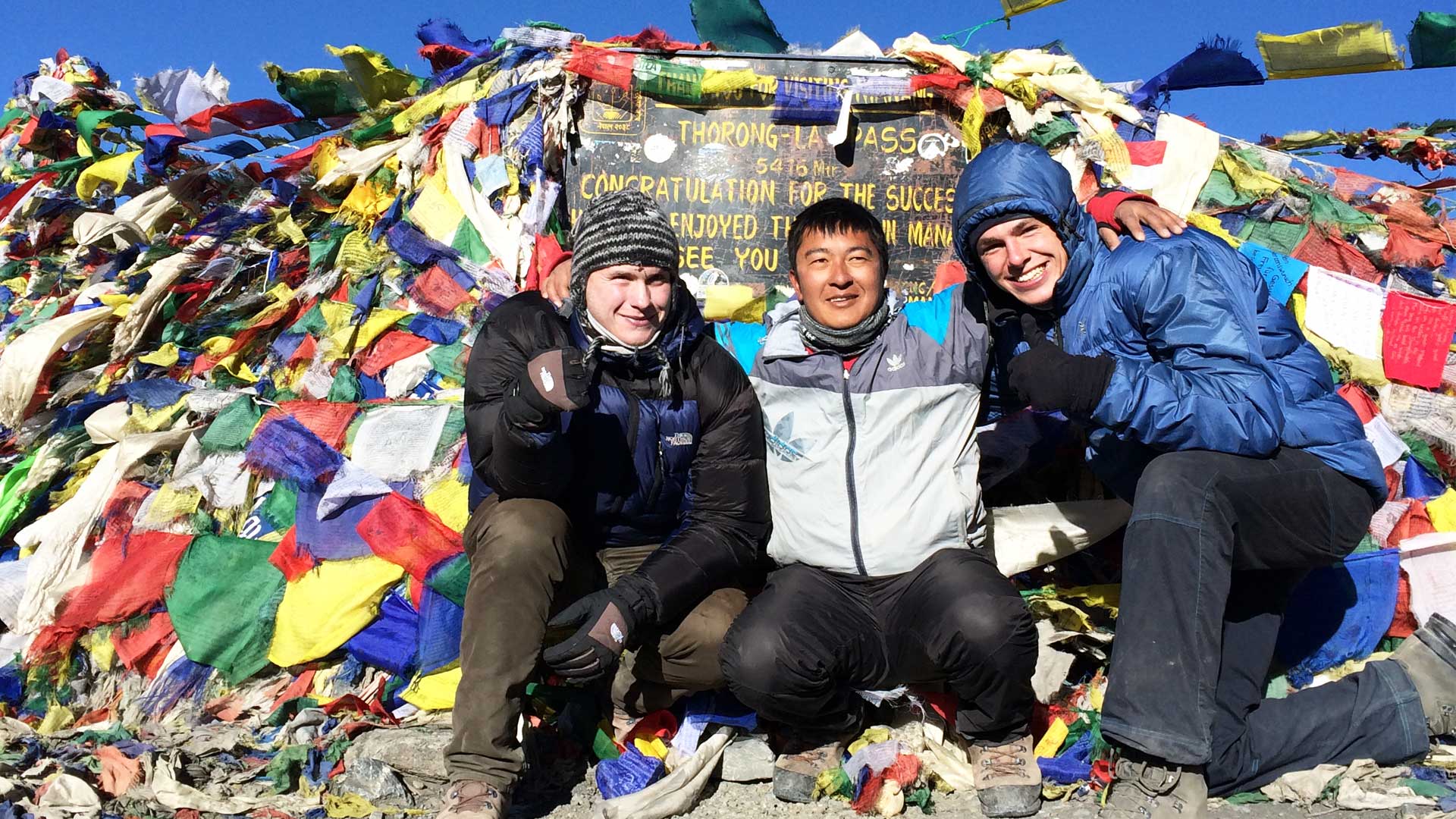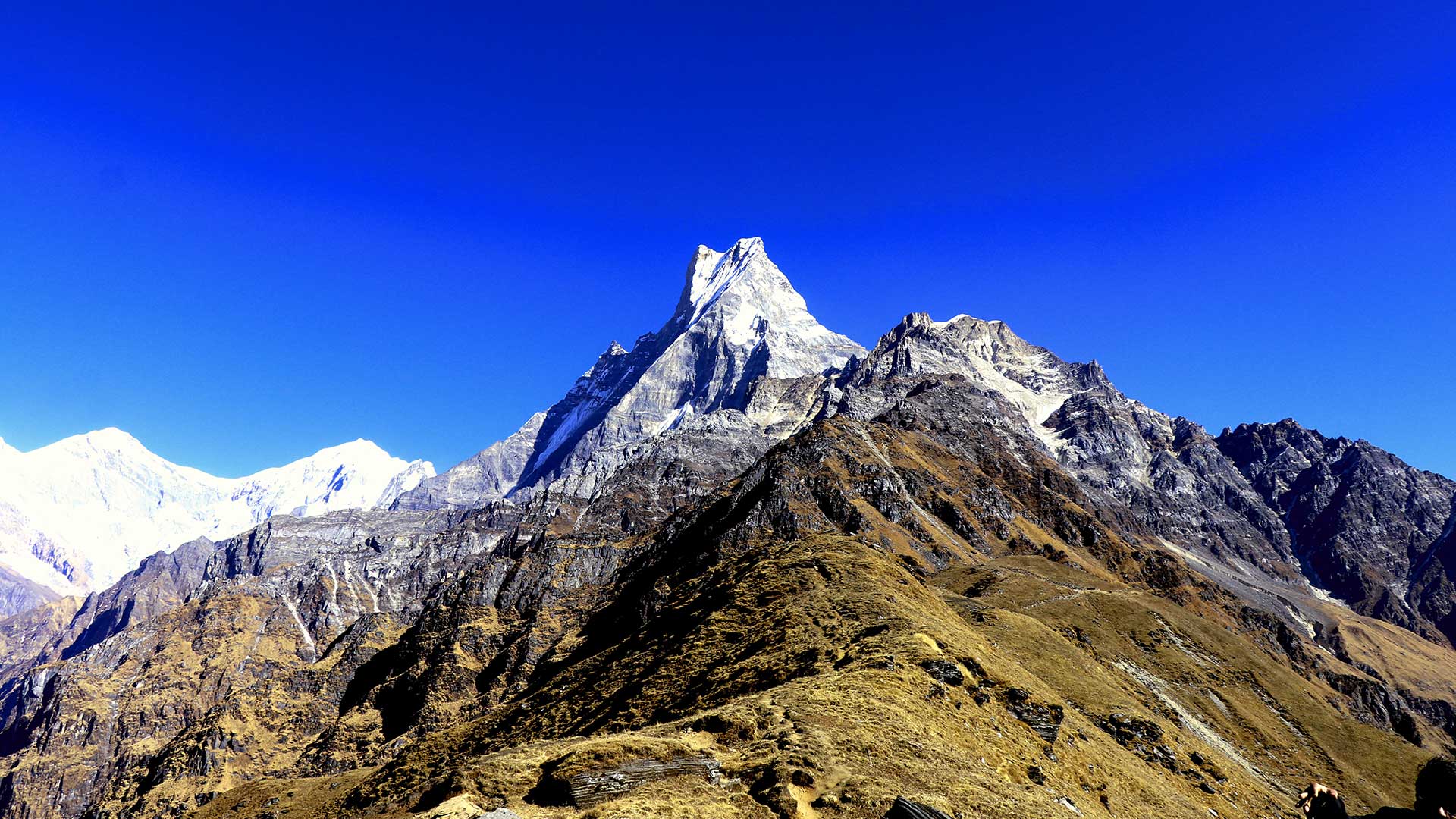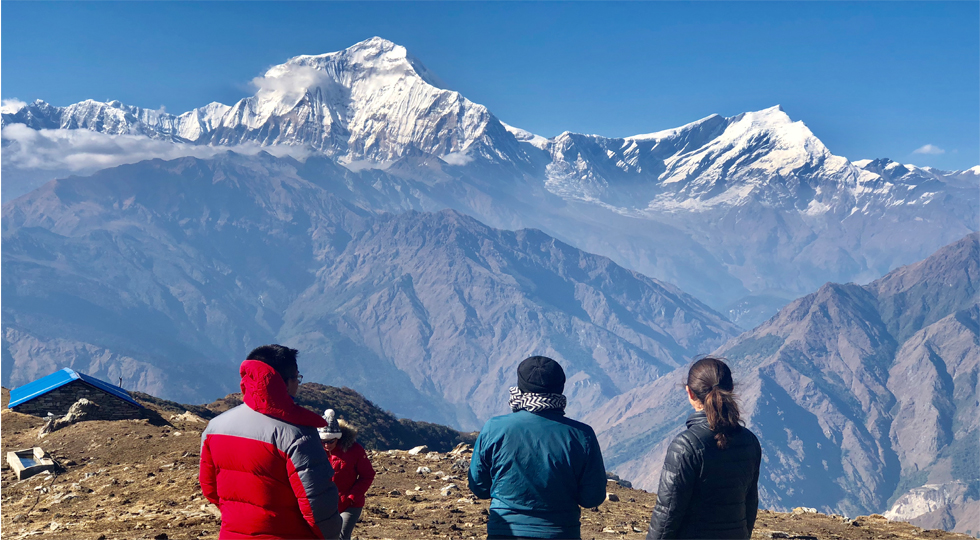Everest Three Passes Trek
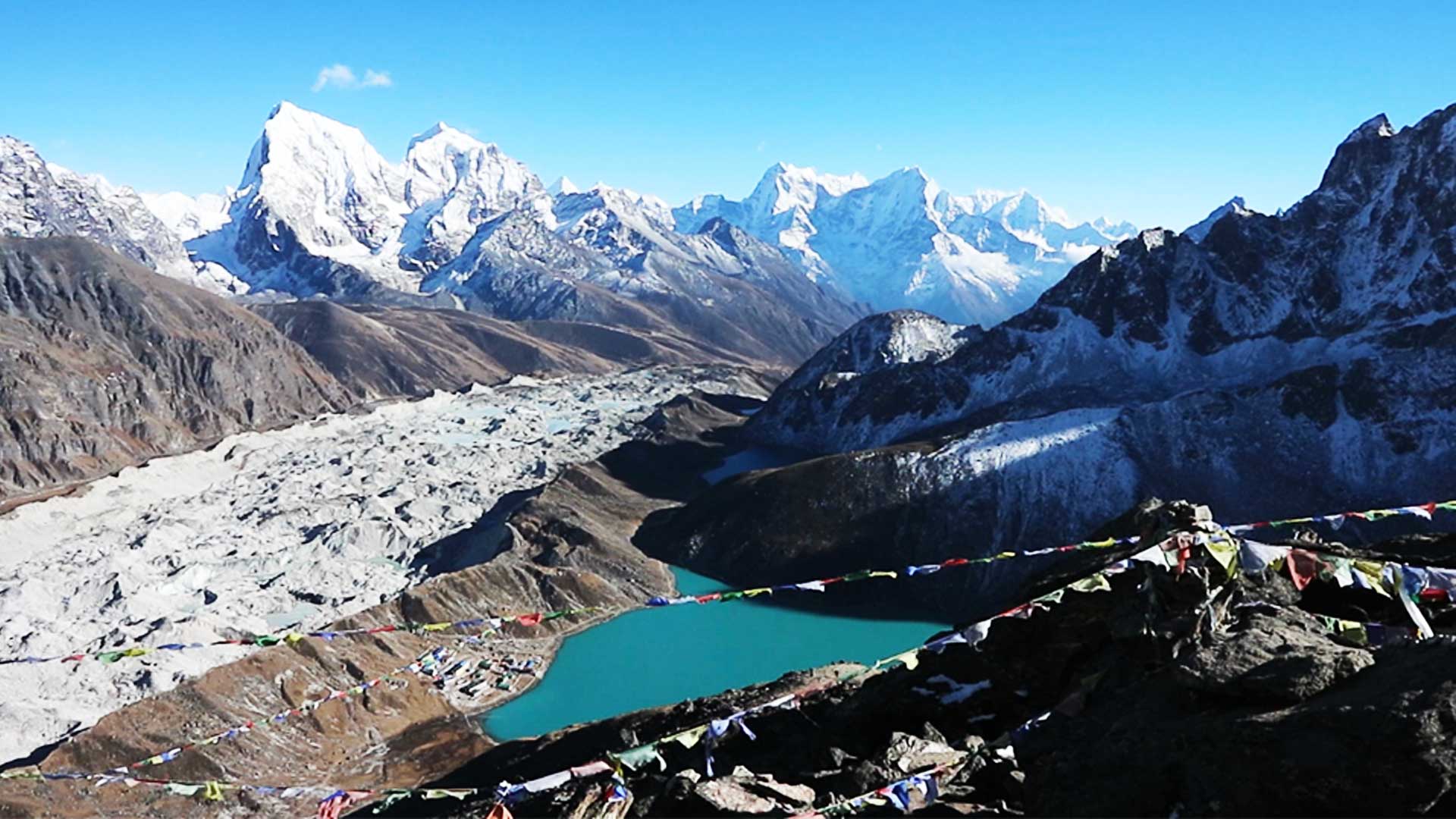
19 days
Kongma La Pass 5,556m
Spring & Autumn
hotel, tea- house
TRIP HIGHLIGHTS
- The three difficult high passes: Kongma La (5,535m), Chola La (5,420m), and Renjo La (5,388m), which provide a challenging experience as well as views of the surrounding beautiful mountain ranges and glaciers.
- Everest Base Camp (5,364m): It takes you to the Everest Base Camp, which is the starting point for attempting to climb the world's highest mountain, Mt. Everest, and offers a close-up view of Mt. Everest and surrounding peaks.
- The Kala Patthar viewpoint (5,545m): This trek includes the popular viewpoint Kala Patthar, from where you can get incredible close-up views of mountains such as Mt. Everest (8,848m), Mt. Lhostse (8,516m), Makalu (8,485m), Mt. Cho Oyu (8,188m), and many others.
- Sherpa Ethnicity and Culture: This trek allows you to interact with the Sherpa community and learn about their traditions, culture, way of life, and hospitality.
- About a 30-minute scenic flight from Kathmandu to Lukla: This flight provides breathtaking views of the snowcapped peaks and Nepalese nature.
- Adventure activities: It also offers multiple possibilities for adventure activities such as hiking, trekking, mountaineering, and peak climbing.
- Remarkable highland monasteries: This trek takes you through Tengboche Monastery (the oldest and largest monastery), Thame Monastery, Pangboche Monastery, and Khumjung Monastery (famous for Yeti scalp)
- The scenic valleys: This trek offers picturesque valleys such as Gokyo Valley, Khumbu Valley, Imja Valley, and Chukkung Valley, each of which offers many mountains, lakes, and glaciers, including the magnificent Gokyo Lake and the Ngumpa glacier.
- Sagarmatha National Park: A UNESCO World Heritage Site with a diverse flora and fauna, including the elusive snow leopard and Himalayan Tahr.
- The most beautiful remote villages: Namche Bazaar, Thame, Gokyo, Dingboche, and Chukhung are among the most beautiful and remote villages, where you can enjoy unspoiled local Sherpa tradition and culture.
- Flora and fauna: You can see Himalayan blue puppy, pine, fir, juniper, primrose, poppies, rhododendron, birch, lichen, bamboo, mosses, and other flora and fauna such as Himalayan Tahr, snow leopard, red panda, Himalayan monal, various pheasant species, musk deer, yaks, and Himalayan black bears.
- The popular rivers: Dudh Koshi River, Bhote Koshi (famous for rafting, kayaking), Imja Khol
TRIP OVERVIEW
Everest Three Passes Trek is a worthwhile and adventurous long-distance trek. It provides you with access to three mountain passes in Nepal's Everest region, including Kongma La Pass (5,535 meters/18,159 feet), Cho La Pass (5,420 meters/17,782 feet), and Renjo La Pass (5360 meters/17,585 feet), that all provide a magnificent view of the world's tallest mountains, including Mt. Everest, Amadablam, Lhotse, Nuptse, Cho Oyu, and many other peaks.
It is usually done clockwise and starts and ends in the town of Lukla. It takes about 19-23 days and covers about 165 kilometers depending on the route you take.
The Everest Passes Trek includes three high snow-capped mountain passes, the stunning Gokyo valley with its turquoise lakes and glaciers, and the Khumbu valley, Buddhist monasteries, a variety of landscapes, lush forests, rocky terrain, and a high-altitude desert. You pass through monasteries, Sherpa villages, and their distinct culture and tradition.
It is challenging to trek. As a result, it is recommended that trekkers have prior high-altitude trekking experience and be in good physical condition. It is essential to bring everything needed for a safe and enjoyable trek, including acclimatization and safety precautions, proper gear, an experienced guide, and being well prepared for changes in weather and altitude.
Due to their clear, dry, and mild weather, the spring (March to May) and autumn (September to November) seasons are ideal for the Everest Three Pass Trek. The rhododendron blooming, especially in spring, decorates the trekking trail and provides excellent visibility of the mountains with beautiful sunrises and sunsets.
Food and accommodation are available at a basic level while trekking. You can order a variety of meals, including Nepalese food items like Dal Bhat (rice, pulses, vegetables, or meat), as well as western meals like momos, noodles, spaghetti, and soups. The rooms are mostly small but comfortable, neat, and clean, with twin beds and either an attached or shared bathroom.
SHORT ITINERARY
Day 1: Arrival in Kathmandu (1,350 meters)
Day 2: Sightseeing tour in Kathmandu Valley
Day 3: Flight from Kathmandu to Lukla (2,800 meters), Trek to Phakding (2,652m) about 35 minutes’ flight and 4-5 hours walking
Day 4: Trek from Phakding to Namche Bazaar (3,450m) 5-6 hours
Day 5: Rest and Acclimatization day at Namche Bazaar
Day 6: Trek from Namche Bazaar to Thame (3,800m) - 4-5 hours
Day 7: Trek from Thame to Lumde (4,137m) - 5-6 hours
Day 8: Trek from Lumde to Gokyo (4,800m) via Renjo La Pass (5,360m) - 7-8 hours
Day 9: Gokyo Valley exploration day and hike to fifth lake (5,386m) 5-6 hours
Day 10: Trek from Third Lake /Gokyo (4,750m) to Thaknak (4,700m) 3-4 hours walking
Day 11: Trek from Thaknak to Zungla via Chola Pass (5,367m) 6-7 hours
Day: 12 Trek from Zungla to Gorakshep (5,357m) and Hike to Everest Base Camp 6-7 hours
Day: 13 Hike from Gorakshep to Everest Base Camp (5,364m) and trek to Lobuche (4,910m)
Day: 14 Trek from Lobuche to Chukhung via Kongma La (4,730m)
Day: 15 Trek from Chukhung to Tengboche (3,867m) 6-7 hours
Day: 16 Trek from Tengboche to Namche (3,440m) 5-6 hours
Day: 17 Trek from Namche bazaar to Lukla (2,800m) 6-7 hours
Day: 18 Flight from Lukla to Kathmandu (1,350m) 35 minutes
Day: 19 Departure day from Kathmandu
Best season for Everest Three Pass Trek
The best times to trek the Everest Three Pass are in the spring (March to May) and in the fall (September to November). It is generally easier to cross the high three passes during these seasons and to enjoy the breathtaking views of the Himalayan peaks because the weather is typically clear, stable, with mild temperatures and low chances of rainfall.
Food and Accommodation in Everest Three Pass Trek
Accommodation on the Everest Three Pass Trek ranges from simple teahouses to luxury lodges. Along the trail, the most common types of teahouses are available, with bed and shared bathroom. The majority of the teahouses have electricity and hot water. The several guesthouse along the trail have private rooms, attached bathrooms, hot showers, Wi-Fi, and other facilities, but they are more expensive than teahouses.
The food along the Everest Three Pass Trek ranges from traditional dishes to delicious meals. Because of their remote area, teahouses have fewer dining options than guesthouses. They serve a variety of dishes such as Nepali dish (rice, lentil soup, and vegetable/meat), momos, pasta, noodles, burgers, soups, spaghettis, pizza, and so on.
DETAILED ITINERARY
Day 1: Arrival in Kathmandu (1,350 meters)
When you arrive at Kathmandu's Tribhuwan International Airport, a representative from our trekking company will meet you and take you to your hotel. Kathmandu is a tourist destination with a variety of activities, adventure, cultures, and history. You'll have the rest of the day to relax or explore Kathmandu's touristic town, Thamel. Thamel combines traditional Nepali culture and modern conveniences. Whether you are seeking exciting history, culture, or relaxation, you will find it.
Day 2: Sightseeing tour in Kathmandu Valley
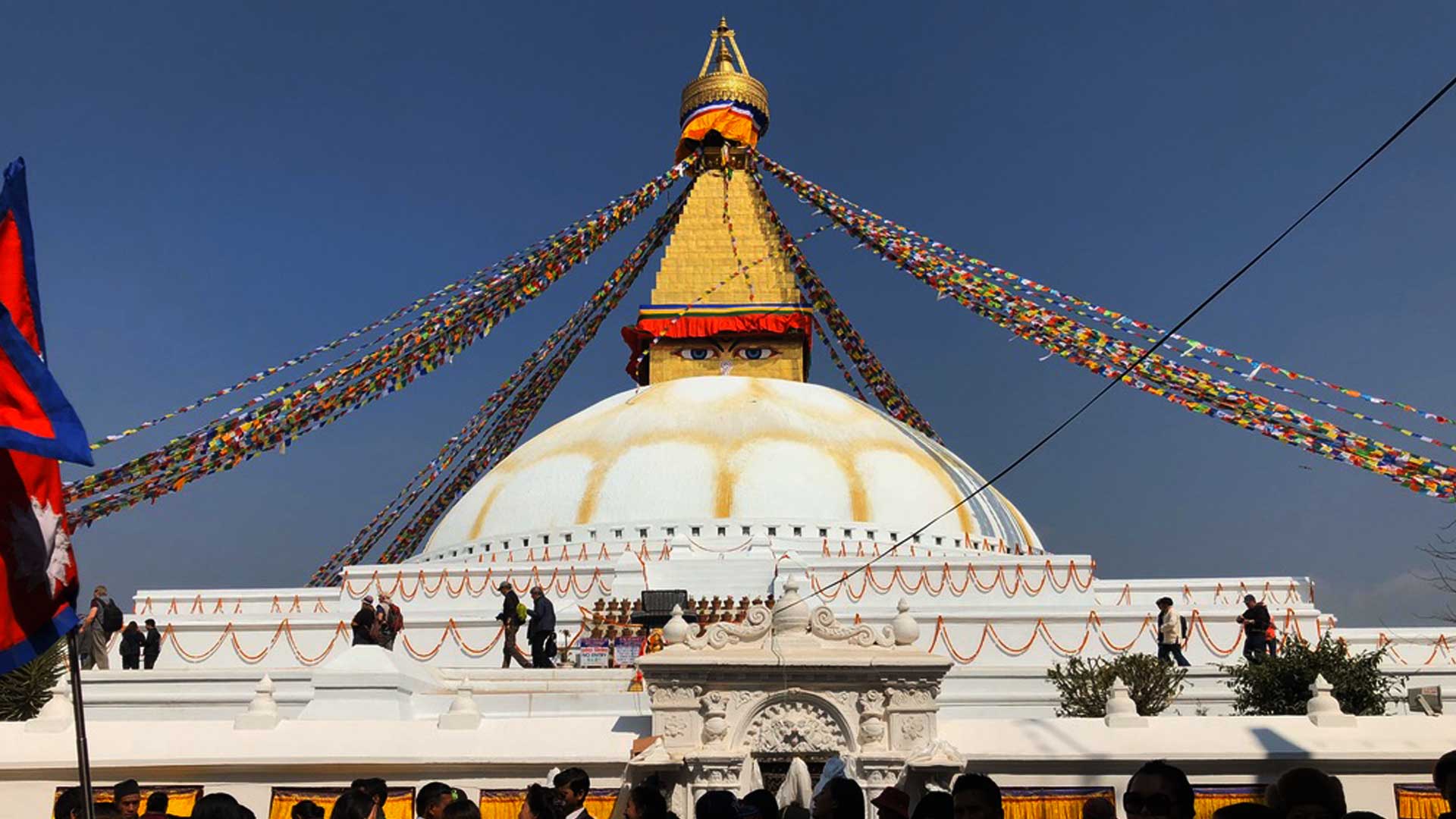
After having breakfast in the morning, our tour guide meet you at your hotel then you will visit UNESCO World Heritage Sites in Kathmandu, such as Swayambhunath, Pashupatinath Temple, Boudhanth Stupa, and Kathmandu Durbar Square. With the assistance of our tour guide, you will explore significant sites in Kathmandu Valley gradually. Swayambhu Stupa is a hilltop stupa in Kathmandu. It is well-known for its beautiful views of Kathmandu Valley cities as well as its resident monkeys. Pashupatinath Temple is a Hindu temple on the Bagmati River's bank. It is famous for its one-of-a-kind architecture, complex carving, and pleasant atmosphere. The Boudhanth Stupa is one of the world's largest stupas and a popular Buddhist pilgrimage site. Kathmandu Durbar Square is an old royal palace packed with stunning architecture, temple and Nepal's history.
Finally, you'll have time to get ready for your trek. You have the option to buy whatever you need. In the evening, our company will provide you welcome dinner at the cultural restaurant where you will get chance to taste the typical Nepali foods with cultural programs.
Include: Bed and Breakfast.
Day 3: Flight from Kathmandu to Lukla (2,800 meters), Trek to Phakding (2,652m) about 35 minutes’ flight and 4-5 hours walking
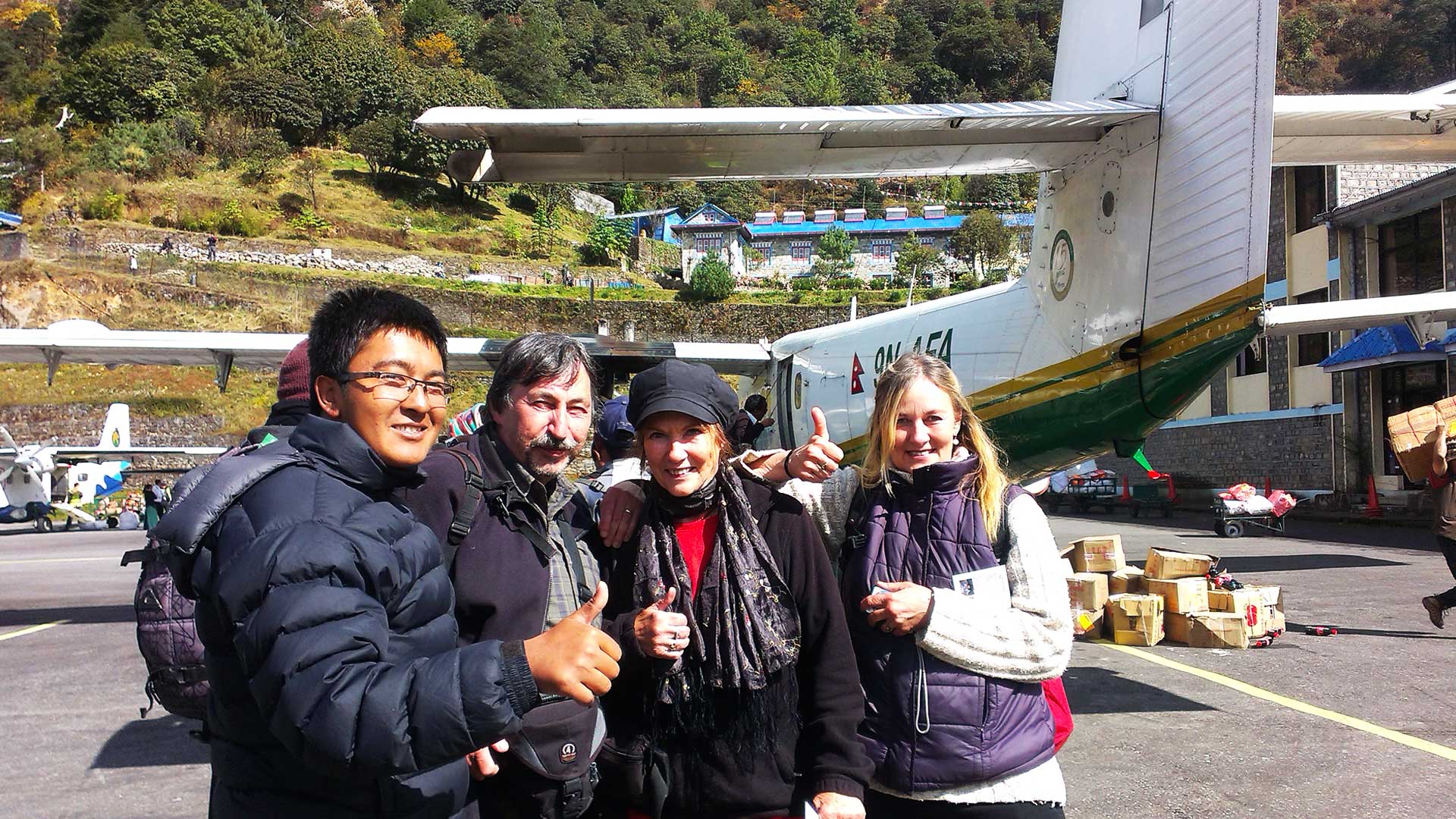
Our company guide will pick you up at the domestic airport in Kathmandu near Tribhuwan International Airport early in the morning. You will fly from Kathmandu to Lukla, where you will be treated to breathtaking views of the Nepalese Himalayas including Langtang range, Holy Mt. Gaurishankar, Numbur peak and nature. When you arrive in Lukla, you will meet your trekking team, and the trail descends to Phakding through stunning pine, Rhododendron forests, and many villages on the bank of the Dudh Koshi River, passing through small villages, UNESCO World Heritage Site, Sagarmatha National Park, and beautiful suspension bridge, Buddhist monastery.
Day 4: Trek from Phakding to Namche Bazaar (3,450m) 5-6 hours
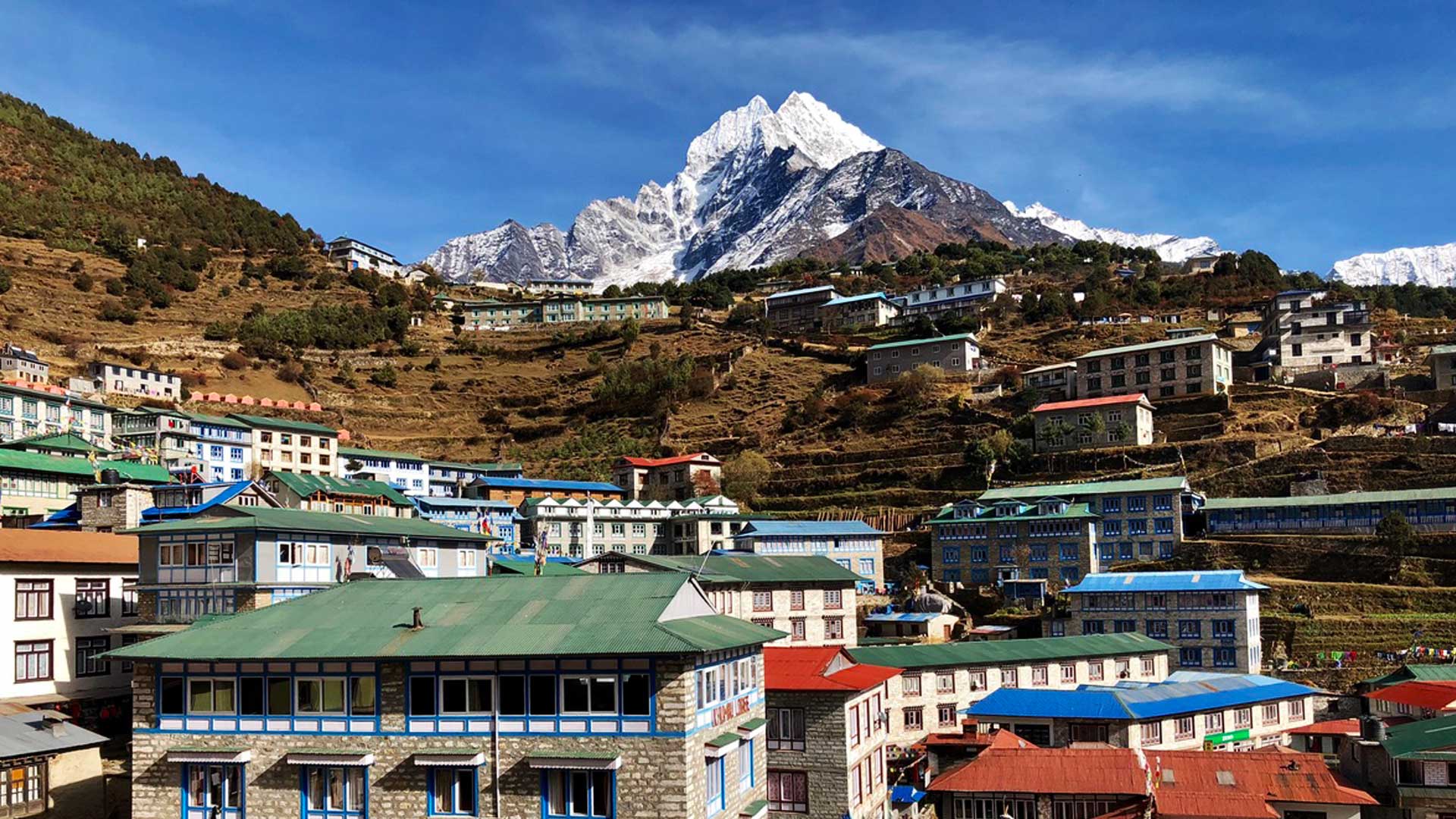
This trail begins in the small village of Phakding on the Dudh Koshi River and leads to Namche Bazaar, the largest village in the Khumbu region and the gateway to the Everest region. You will cross several suspension bridges, including the famous Hillary Bridge, dense pine and rhododendron forests, beautiful rural areas and waterfalls. On the middle of the way to Namche Bazaar, you will see the glimpse of Mt. Everest, Lhotse and Nuptse.
Day 5: Rest and Acclimatization day at Namche Bazaar
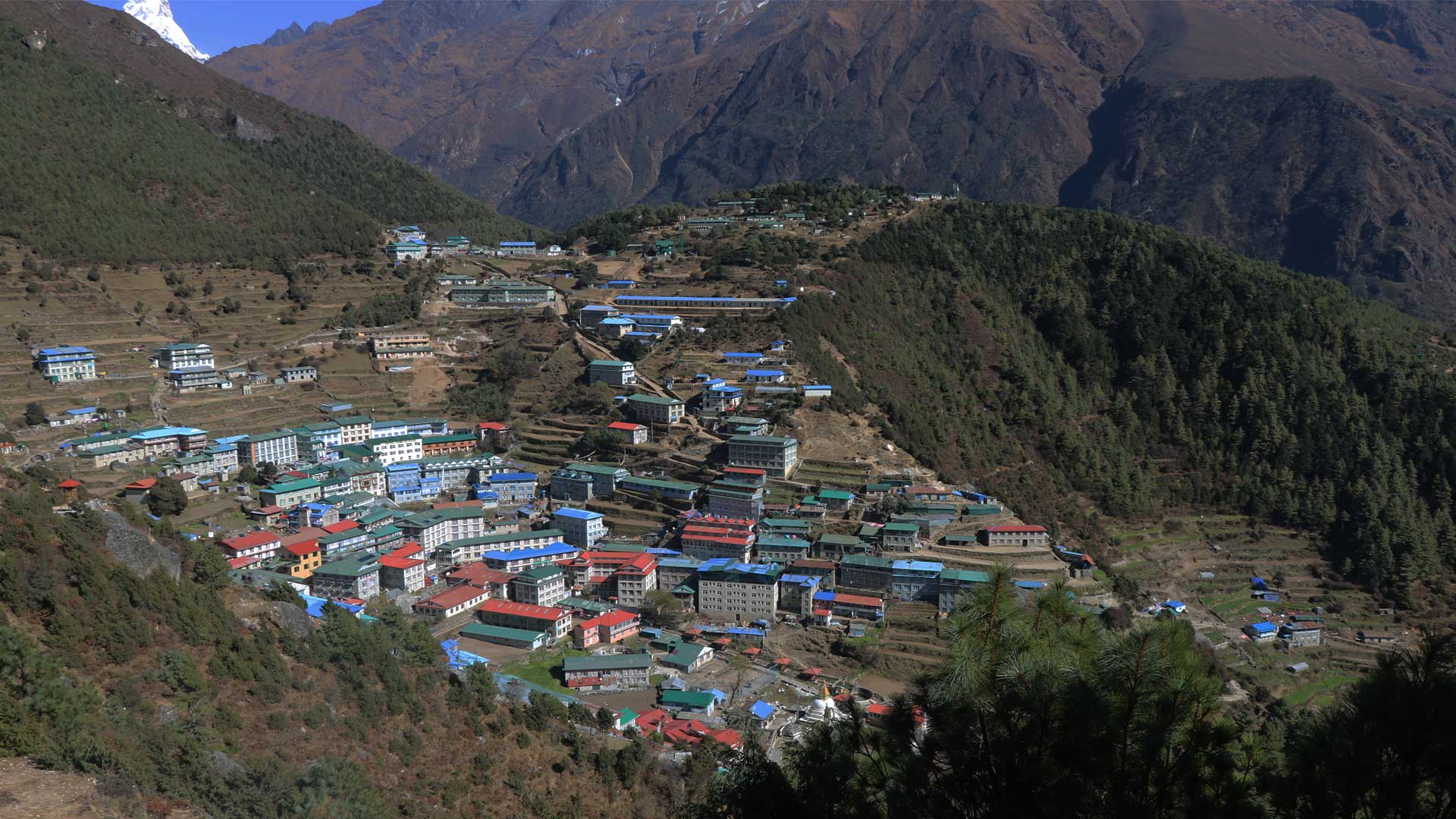
Today, you will acclimate your body to high altitude and reduce your risk of altitude sickness. You visit the Namche bazaar and meet the legendary Sherpa ethnicity. Sherpa Museum, Sagarmatha National Park, and a monastery are all worth a visit. The UNESCO World Heritage Site Sagarmatha National Park is home to a diverse range of flora and fauna, including the elusive snow leopard. You can see Mt. Everest, Lhotse, Ama Dablam, and other peaks. You can visit Khunde and Khumjung villages, which have truly stunning views of the mountains, including Mt. Everest.
Day 6: Trek from Namche Bazaar to Thame (3,800m) - 4-5 hours
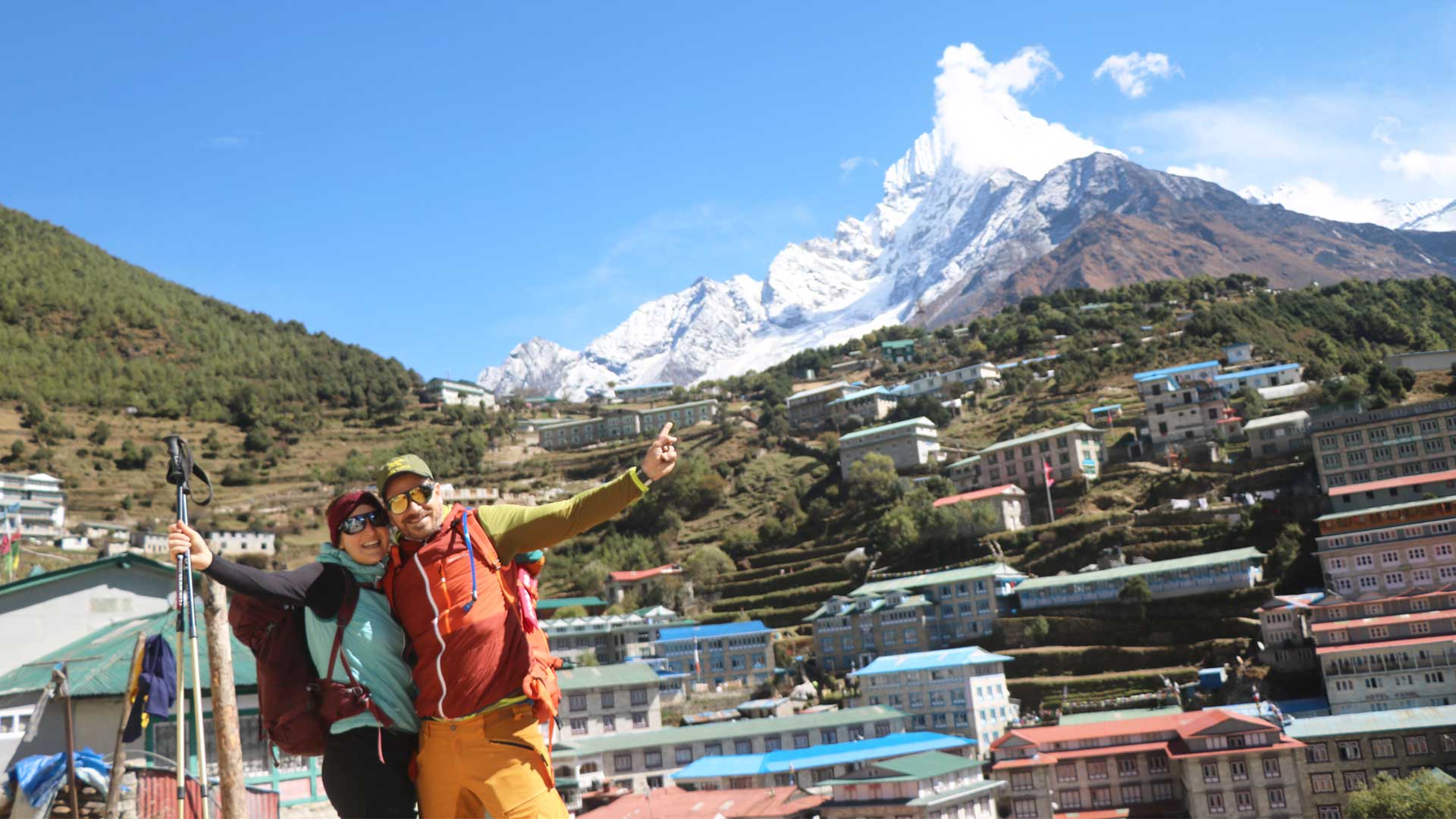
This trail takes you through the valley to the small traditional Sherpa village of Thamo, and then to Thame, where you can experience the traditional Sherpa people and their way of life in the upper Bhote Koshi valley. It is known for housing several ancient monasteries, including Thame Gompa. You pass through several suspension bridges, including Larja Dobhan. It also has a small quantity of hydropower. You will be rewarded with breathtaking mountain views of Thamo peak ridge, Kwongde, Thamserku, and many others.
Day 7: Trek from Thame to Lumde (4,137m) - 5-6 hours
You walk to Marlung on the Bhote Koshi River's bank. It has a steeper slope that adventurers use for activities like rafting and kayaking. The trail ascends through the dry valley to Lumde. This trail will take you through snow-capped mountains and Nangmala valleys. As you gain altitude, the air becomes thinner, the weather becomes colder, and the landscape becomes more barren.
Day 8: Trek from Lumde to Gokyo (4,800m) via Renjo La Pass (5,360m) - 7-8 hours
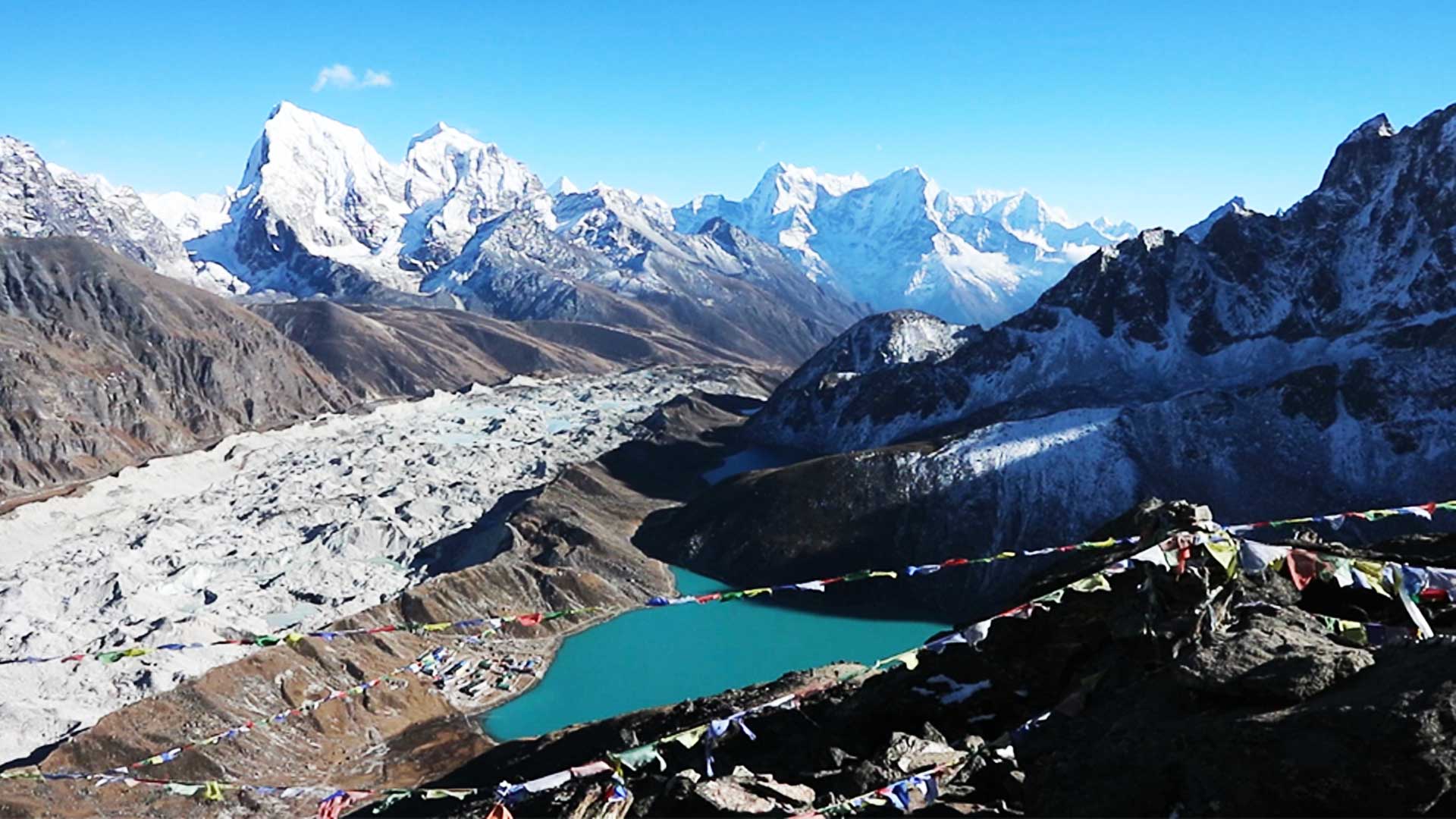
After breakfast early in the morning, you hike to the top of the Renjo La Pass for spectacular view of Mt. Everest, Mt. Nuptse, Mt. Makalu, and surrounding peaks, as well as the Gokyo Lakes (a series of six glacier lakes) and the Ngozumpa glacier. You walk to Gokyo, a remote village near Gokyo Lake that has a lodge and restaurant. You descend a little to The Third Lake to spend the night.
Day 9: Gokyo Valley exploration day and hike to fifth lake (5,386m) 5-6 hours
The 'Gokyo Lakes' are a series of stunning turquoise lakes in Gokyo Valley. This day allows you to explore the high altitude Gokyo valley, including surrounding mountains and Mt. Everest, as well as the Fifth Lake, Cho Oyu Base Camp, Ngozumpa Glacier, and Nangpala valley. Later, you hike through glaciers to reach Fifth Lake. The breathtaking views of the surrounding mountains and the ice lake leave you speechless. The trail finally returns you to Third Lake for an overnight stay at the hotel.
Day 10: Trek from Third Lake /Gokyo (4,750m) to Thaknak (4,700m) 3-4 hours walking
This trail now begins at the largest of the Gokyo lakes. On a clear day, you can see Mt. Cho Oyu and the surrounding snow-capped peaks. This trail leads you through the moraine of the world's longest glacier, the Ngozumpa glacier (36 km), where you can listen to the beautiful sound of rock falling into a small glacier lake. You walk an icy, rocky path along the way. When the sun's rays hit the ice, it melts quickly. As a result, we should pass the glacier before the light changes. You make the ascent to Thanknak. It is a small town located, though it's a popular rest stop for trekkers on their way to the Cho La Pass. Stay at the hotel for the night.
Day 11: Trek from Thaknak to Zungla via Chola Pass (5,367m) 6-7 hours
This is a particularly difficult but rewarding day of the trek. After breakfast, you will ascend for a short time before descending to the bottom of the Cho La Pass. Then you can climb to the steep and rocky top of the Cho La Pass for breathtaking views of the mountains, Khumbu Glacier, and Ngozumpa Glacier. Again, you descend to Zungla via a vast rocky terrain, moraines, and a narrow icy path. Stay at a hotel for the night.
Day: 12 Trek from Zungla to Gorakshep (5,357m) and Hike to Everest Base Camp 6-7 hours
This trail leads to Lobuche via an ascending and descending trail. After that, it takes you to the final village, Gorakshep, via a mostly rocky and dry trail. You also have the opportunity to witness Changri Nup Glacier. Along the way, you will see breathtaking views of mountains and glaciers such as Mt. Everest, Mt. Pumori, and the Khumbu glacier, among others. A few up-and-down trails bring you to the bottom of Kalapatthar, Gorakshep, where you can take a short break to enjoy the surrounding views before hiking to Kalapatthar. You hike for about 3 hours through the uphill and rocky terrain to the viewpoint Kalapatthar in the evening. This trail necessitates a high level of fitness and trekking experience. This trail offers breathtaking views of several mountains, including Mt. Everest, Mt. Lhotse, Mt. Ama Dablam, Mt. Nuptse, Mt. Pumori, Thamserku, and many more. You return to Gorekshep for breakfast before continuing your journey to Lobuche. Lobuche is a popular perfect getaway for trekkers on their way to the third pass, Kongma La. This trail is almost plain and easy to walk, passing through several inhabitants and pastures. Stay in a hotel for the night.
Day: 13 Hike from Gorakshep to Everest Base Camp (5,364m) and trek to Lobuche (4,910m)
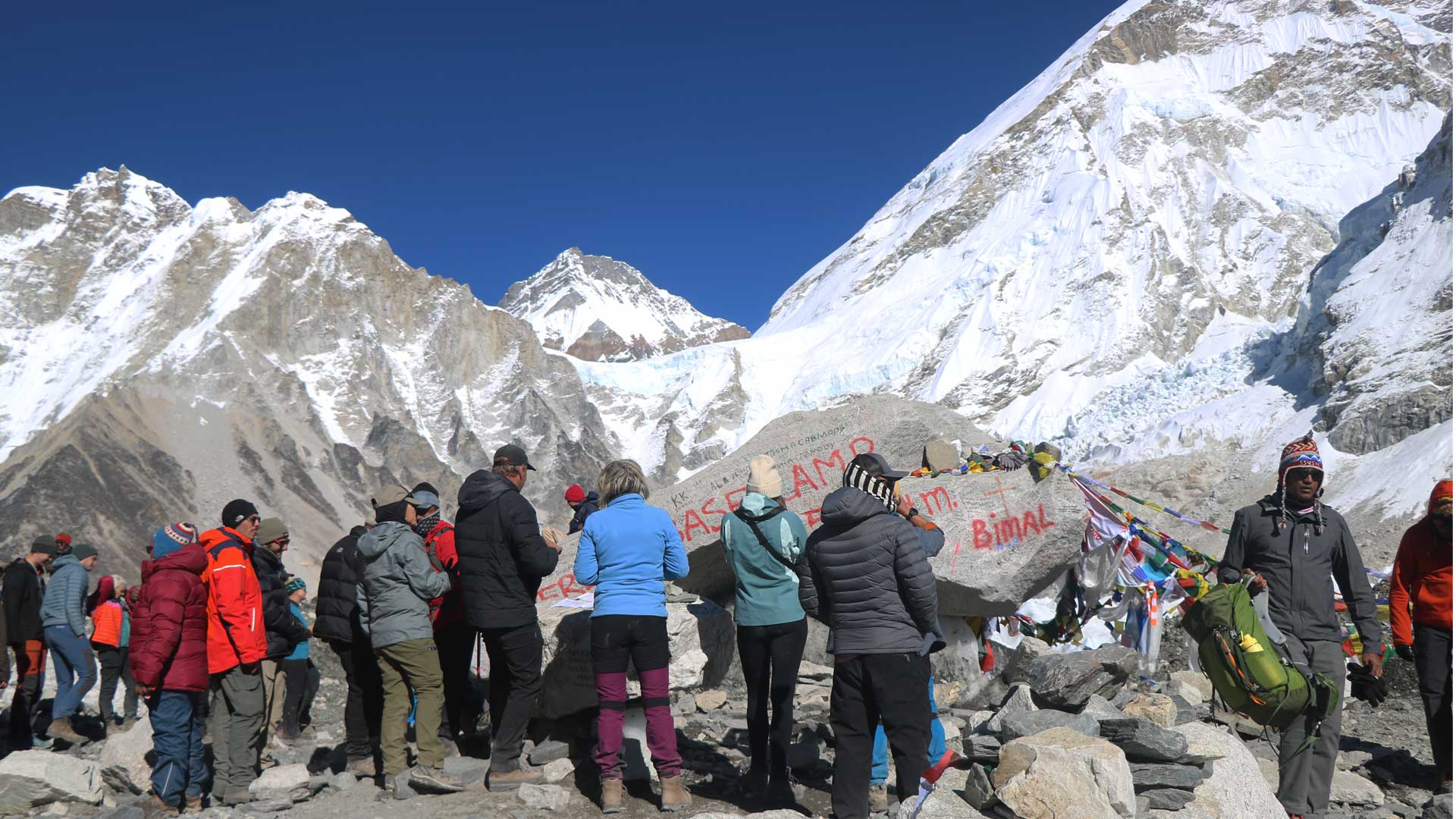
After having a breakfast, hiking to Everest Base Camp takes you for about 5 hours. Everest Base Camp serves as the starting point for ascents of the world's highest mountain, Mt. Everest, and provides a close-up view of the mountain and nearby peaks. You may interact with climbers here. Finally, you return to Gorakshep and continue trek to Lobuche. Overnight at the hotel.
Day: 14 Trek from Lobuche to Chukhung via Kongma La (4,730m)
Today's trek takes you to the east Khumbu glacier. The trail leads you to the highest pass, Kongma La Pass, after crossing the glacier. The trail provides outstanding views of the Khumbu Glacier as well as several peaks such as Mt. Lhotse, Nuptse Mt. Makalu, Changtse, Baruntse etc. This is a rocky and uphill trail. Because there are no shop facilities, you should bring bottles of water and nuts with you. After exploring the Kongma La Pass, you descend to the Imja Khola Valley via a small Sherpa settlement and suspension bridges over rushing rivers. As you continue on your journey to a remote village Chukhung village in Chukhung Valley, you will be able to see the beautiful scenery of Ama Dablam. On the way to Island Peak, Chukhung is a popular destination. It is for staying overnight at hotel.
Day: 15 Trek from Chukhung to Tengboche (3,867m) 6-7 hours
Your journey today will take you to Dingboche. It is a small village in Imja Valley that serves as a popular rest stop for trekkers and is home to a number of lodges and restaurants. You can explore this village and its beautiful towering mountains, You can continue walking to Pangboche village and reach Tengboche, where the oldest Monastery is located. Beautiful forests, small settlements, and mani walls, the Imja Khola river, several streams, and suspension bridges are all along the way. This trail offers spectacular views of Mt. Everest, Mt. Lhotse, and Mt. Ama Dablam. Tengboche is where we will spend the night.
Day: 16 Trek from Tengboche to Namche (3,440m) 5-6 hours
You walk to Khumjung through the rhododendron, fir, pine, and juniper forest, crossing the bridge. After lunch at Kyangjuma, you proceed to Namche Bazaar, a bustling town in the Khumbu valley with several hotels, lodges, restaurants, and shops. Overnight at hotel.
Day: 17 Trek from Namche bazaar to Lukla (2,800m) 6-7 hours
This is a relatively easy section of the journey. It takes you to Monjo through a beautiful pine forest and across a river bridge. The Jorsalle checkpoint examines our documents. Then walk to Phakding for lunch before continuing on to Lukla. Lukla, the gateway to the Everest region, is a vibrant town with many shops, businesses, hotels, and restaurants. It has the Lukla/Tenzing Hillary International Airport. Because of its short, sloppy runway and surrounding mountain ranges, it is one of the world's most dangerous airports. Where you celebrate the last trekking day with your trekking crew staffs. Overnight at hotel.
Day: 18 Flight from Lukla to Kathmandu (1,350m) 35 minutes
In the morning scenic flight from Lukla to Manthali/Kathmandu offers breathtaking views of the mountains and landscapes. You will be treated to panoramic views of surrounding peaks, landscapes, villages and valleys. Overnight at hotel in Kathmandu with bed and breakfast.
Day: 19 Departure day from Kathmandu
After breakfast, our company representative will pick you up from the hotel and drop you off at Tribhuwan International Airport in Kathmadu , Nepal. If your flight is in the evening, you will have time to go shopping or take a break at your hotel. Finally, we consider ourselves extremely fortunate to have had you accompany us.
FREQUENTLY ASKED QUESTIONS
1. How hard is the Three Passes Trek?
The Everest Three Passes Trek is a tough trek. It necessitates a high level of physical fitness, strength, and acclimatization to a high altitude environment. You must cross three high altitude passes, such as Kongma La (5,535m), Cho La (5,420m), and Cho La (5,420m), as well as high altitude attractions such as Kala Patthar (5,545m) and Gokyo Ri (5,357m). It has steep ascents and descents, a rocky and icy trail, and can be affected by potentially changeable weather conditions and high altitude sickness. Trekkers can, however, make the Everest Three Passes Trek enjoyable and memorable with adequate preparation, training, and guidance from local guides and assistants.
2. What is the Everest Three Passes Trek in Everest?
The Everest Three Passes Trek is a challenging trekking route in Nepal's Everest region. It has two options: clockwise and anticlockwise route. The trail usually takes 19 to 21 days. In order to complete this trek, hikers must cross several high passes above 5,000 meters, including the Kongma La (5,535m), Cho La (5,420m), and Cho La (5,420m), as well as high-altitude landmarks like Kala Patthar (5,545m), and Gokyo Ri (5,357m). Mt. Everest, Lhotse, Makalu, Cho Oyou, and other world's highest mountains are available to hikers there. Additionally, it provides a chance to observe about the Sherpa people's culture and way of life. It begins and ends in a town of Lukla.
3. How much elevation gain is the Everest Three Passes Trek?
Trekkers on the Everest Three Passes Trek gain approximately 6,000 meters above sea level as they cross three high passes in the Nepalese Himalayas: Kongma La (5,535m), Cho La (5,420m), and Cho La (5,420m) (5,420m).
4. How long is the Everest Three Passes Trek?
The Everest Three Pass Trek takes about 19 and 21 days to complete, depending on the travel plan and trekker steady rate.
5. Do we need a guide for the Everest Three Passes Trek?
Some Nepalese trekking destinations do not allow solo travelers, but you can do the Everest Three Pass Trek without even a guide. The Everest Three Pass Trek is a difficult trail. You must pass through high-altitude passes such as Kongma La (5,535m), Cho La (5,420m), and Cho La (5,420m), as well as high-altitude landmarks which include Kala Patthar (5,545m) and Gokyo Ri (5,420m) (5,357m). You may, however, suffer from high altitude sickness and other problems. It is therefore recommended that trekkers join a local company and hire an experienced guide to make their journey enjoyable and memorable.
6. What is the best seasons of the year to trek Everest Three Passes Trek?
The best times to trek in the Everest Three Passes Trek are in the autumn (September to November) and in the spring (March to May).
Autumn is one of the best seasons because of the dry, clear, and temperate weather that prevails during this time. Landscapes are adorned by the vibrant rhododendron and other beautiful flowers that are in bloom. The result is that visibility is excellent and the skies are blue.
Another great season is spring, which lasts from March to May and features beautiful wildflowers, including rhododendrons, blooming during this time, as well as generally light rain, warm temperatures, clear skies, and stunning mountain views. The best seasons for this trek are therefore autumn and spring.
